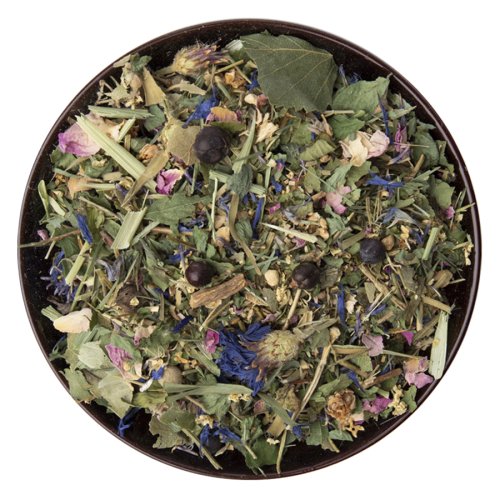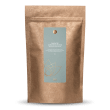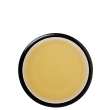Camellia sinensis (Tea)
Tea, derived from the Camellia sinensis plant, is traditionally grown as a shrub. The ample sunlight in tea cultivation regions enhances the concentration of valuable compounds within its evergreen leaves, making tea a popular beverage cherished the world over. Green tea, in particular, boasts abundant quantities of catechins, chlorophyll, amino acids, organic acids and vitamins.
Green Oat
Green oats (Avena L.) for tea are made from unripe, green oats that are harvested before full bloom. Green oats are very alkaline and contain many phytochemicals.
Elderflower
Elder (Sambucus nigra) often grows in close proximity to human habitation, where it nestles against houses and walls. The small tree graces us with its fragrant flowers from May to July, and as late summer transitions into autumn, the flowers mature into berries. The wisdom of the Celts acquainted them long ago with the uses of elder's blossoms and berries.
Red Clover
Red clover (Trifolium pratense) has many names such as Hummellust or Zuckerbluemli. Red clover can be found in meadows and fields, in sparse forests in hilly and alpine altitudes. As a plant cultivated for fodder production, it can be found all over Europe. Since the Middle Ages, red clover has had a firm place in monastery gardens and hay gardens.
Ginger
Comprising approximately 60 species, real ginger belongs to the ginger family (Zingiberaceae). Its origins are estimated to be the regions of India and Sri Lanka, but it is now widely cultivated in many subtropical and tropical regions. The plant can reach heights of 50–100cm and features thick stems and long, reed-like leaves. The flower shaft emerges from the aromatic root and grows up to 25cm long, bearing reddish-yellow to dark purple petals.
Cornflower
The cornflower (Centaurea cyanus, Cyanus arvensis) is an annual flowering plant that often grew as a weed in cornfields in the past, hence its name. Due to intensive farming, these days it is an endangered species in its native Europen homeland, but can still be found growing in the wild at altitudes of up to 1800m in the Alps. Because of its high content of bitter substances and anthocyanins, it has a firm place in herbalism.
Birch Leaf
The silver birch tree (Betula pendula), a member of the birch family (Betulaceae), is one of approximately 40 birch species found across Central Europe, Asia and America. The silver birch, the most prevalent variety in Europe, has distinctive black and white bark and holds a rich heritage in traditional practices, as both its leaves and bark have been long employed for both internal and external applications.
Rooibos
The shrub-like rooibos (Aspalathus linearis) prefers the hot-dry climate of the South African mountain regions. Here, the small needle-shaped leaves of the rooibos are traditionally enjoyed as a tasty tea. While it contains few tannins, it is particularly rich in minerals. The rooibos leaves develop their mild yet intense aroma as well as their typical reddish-brown colour during the fermentation process.
Lime Blossom
The lime tree (Tilia platyphyllos Scop.) or more precisely the large-leaved lime tree is a preferred herb of traditional herbalism. It is a "true European" and can live up to 1000 years, although it is rarely found in the wild. The inflorescences hang in umbels and appear at the summer solstice between June and July. While the leaves of the large-leaved lime tree are up to 15cm in size, those of the small-leaved lime tree are relatively small at around 5cm. Its trees grow up to 40m high and are very popular with bees.
Juniper
The juniper (Juniperus communis) originates from the Alps and central to northern Europe. Juniper bushes, which are said to originate from the Mediterranean region, belong to other plant species that are even closer to cypresses than the Central European species.
Rose
The rose (Rosa centifolia) is a true Persian; Iran has the most rose varieties today. We owe today's rose diversity in Europe to Charlemagne, who initiated the cultivation of the rose as a fragrant and useful plant. It is not merely a symbol of love; for both the Greeks and the Chinese held its qualities in high esteem.
Gentian
When most people think of gentian, they think of blue gentian flowers. Food supplements, however, use the root of the great yellow gentian (Gentiana lutea L.). It contains many bitter glycosides and, consequently, has an extremely bitter value of at least 10,000.











